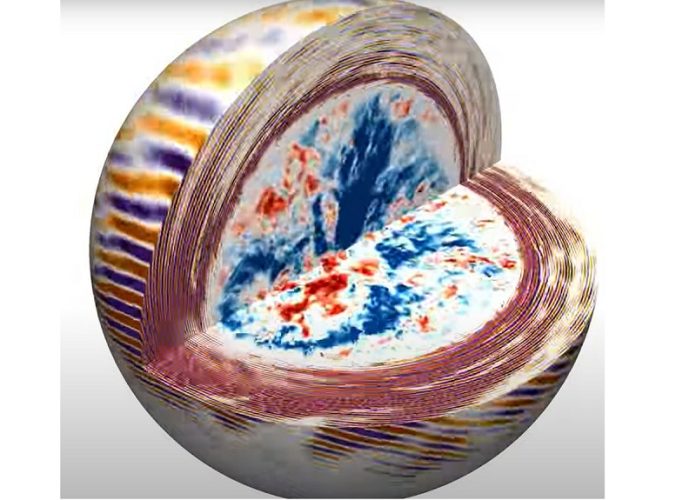
A team of researchers from the Flatiron Institute and Northwestern University have developed computer simulations that can help us understand the insides of massive stars.
This is a first in the history of astronomy.
The team’s simulations show how turbulence in the heart of a star can cause its light to twinkle or flicker.
This flicker, however, is not the same as the twinkling we see in the night sky, which is caused by Earth’s atmosphere.
These simulations could enable us to learn more about stars larger than our sun. They might even reveal how stars form, change over time, and create elements like oxygen, which is crucial for life on Earth.
Right now, though, our telescopes aren’t powerful enough to detect these tiny effects. But, as technology improves, we might be able to “see” inside the stars.
To understand how this works, think of a star as a gigantic nuclear power plant.
In the star’s center, high pressure forces hydrogen atoms to combine into helium, releasing energy and heat. This heat stirs up blobs of plasma (a hot, electrically charged gas) that rise and fall.
This movement is much like the churning in a boiling pot of water or the rise of colorful blobs in a lava lamp.
This churning motion in the star’s core creates waves. These waves spread out to the star’s surface, causing it to expand and contract.
This, in turn, causes the star’s light to brighten and dim. By studying these changes in a star’s brightness, scientists might be able to figure out what’s happening in the star’s core.
Creating a computer model of this process is extremely hard.
The waves generated in the star’s core can last for hundreds of thousands of years, while the turbulence creating them lasts only a few weeks. To tackle this problem, the researchers used a creative solution.
They likened the process to sound waves produced by musicians in a concert hall.
The team tested their idea by using music, such as “Jupiter” from Gustav Holst’s orchestral suite “The Planets” and even “Twinkle, Twinkle, Little Star”.
They simulated how these sound waves would bounce around inside stars of different sizes. They then applied these findings to simulate how turbulence in stars of three, 15, and 40 times the mass of our sun would cause their light to flicker.
However, their simulations also deepened a mystery. Astronomers have noticed a pulsing, or “red noise,” in the light from hot, massive stars. Many believed that the star’s core’s turbulence caused this.
Yet, the new simulations showed that the flicker from core turbulence was too weak to explain the observed red noise.
The team is now working to refine their simulations. They are curious about how fast-spinning stars might affect the twinkling caused by core turbulence.
As they continue their work, they hope to answer this question and uncover more secrets of the stars.
The study was published in Nature Astronomy.
Follow us on Twitter for more articles about this topic.
Source: Simons Foundation.



